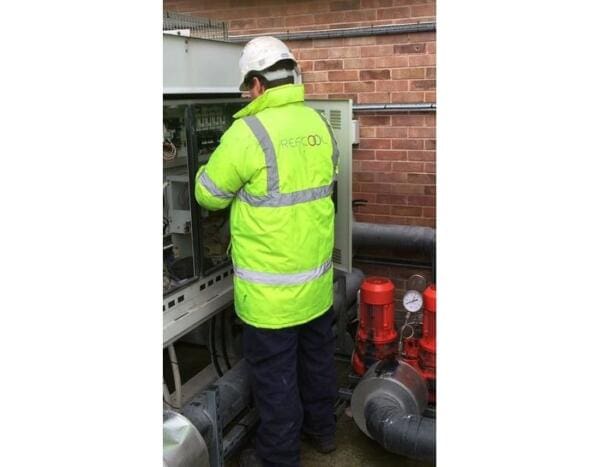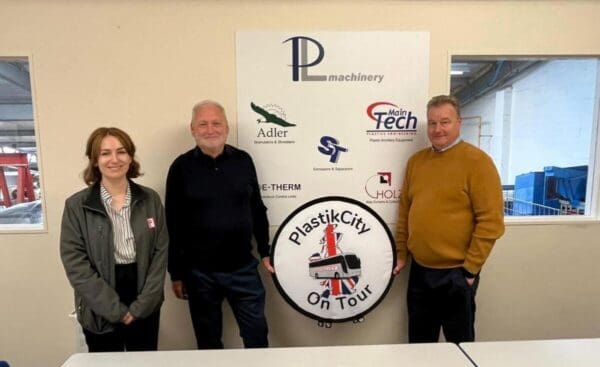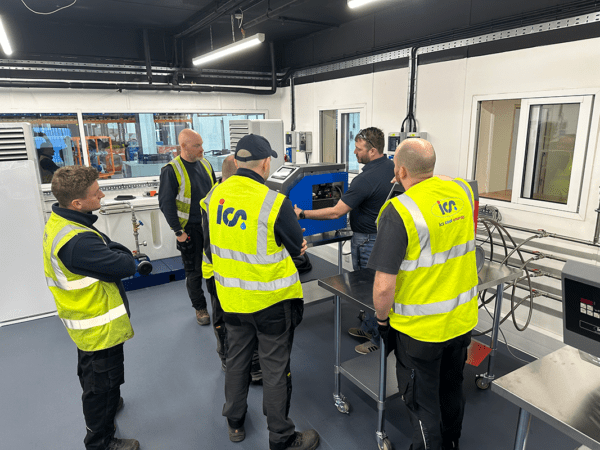
‘HOT’ Tips For Dealing With HOT Weather
As the UK’s longest heatwave in five years continues, Refcool Refrigeration present their top tips for dealing with the hot weather in plastics manufacturing.
- SELECTION!
Ensure any new cooling plant that you purchase is selected correctly not only for the process but also for the location and for any foreseeable future growth in demand.
- LOCATION – LOCATION – LOCATION!
Avoid placing coolers and chillers with vertical warm air discharges under overhangs or in courtyards where the warm air cannot escape and is drawn back into the cooler creating its own hot local climate which will result in greater energy usage, reduced cooling capacity and ultimately shorten the life of the equipment. Where practical to do so, do not place cooling equipment on the Southside of your premises, avoid sun traps.
Check the space around your air-cooled plant – INCLUDING pump air inlets and if possible move the equipment into a better ventilated space or remove the obstructions created by other portable plant and equipment that could interfere with the air flow.
Check for heat sources such as warm air extract fans in the location and avoid where practical or seek advice on how to work around the situation that you have.
Design your system for expansion and add in extra connections and valves where possible to be able to bring in hire chillers or additional permanent capacity.
- CLEAN UP YOUR ACT!
Check your chiller and air blast coils for obstructions such as leaves and other debris. Examine the gaps between the fins and if they look blocked then check the airflow through the chiller or air-blast by holding a piece of paper against the coil to see if it is drawn and held onto it when the fans are running.
If blocked then the coils will need to be cleaned with a low pressure wash and/or a chemical treatment, this is ideally done by a professional used to doing such work to avoid damage to the delicate fins and pipework. Similarly, check pump inlets for debris such as windblown rubbish
- NEIGHBOURS TOO FRIENDLY!
Where there are multiple chillers and coolers together ensure that there is sufficient space between them to avoid the warm air discharges being drawn back into the neighbouring units. Solutions can involve changing the running sequence, moving the equipment or manufacturing ductwork or separation panels to draw in fresh air or discharge the warm air at a ‘safe’ distance or direction.
- LOOK AFTER YOUR TOOLS AND THEY WILL LOOK AFTER YOU!
This old saying is particularly true for cooling equipment which is all too often neglected. Check all chiller panels are in position and that there is no short circuiting of air through open panels which could bypass the condenser. Ensure the chillers and coolers are serviced at least twice a year, ideally one of the services being before the summer months. If a chiller has lost refrigerant then its performance will be impaired and it will work much harder particularly in hot weather and if it is serviced then depending upon the nature of the leak it would be typically economically repairable but if it burns a compressor out due to continual running due to being low on refrigerant then it may not be such a happy story.
- PIPEWORK PUZZLES!
Ensure your pipework is correctly sized to provide a sensible and within limits pressure drop for the optimal flowrate for the chiller(s) or cooler(s) that you are using i.e typically 5C delta T for chillers.
Avoid lying flow and return pipework next to each other without proper lagging, ideally leave plenty of air gap between them so that heat cannot be picked up by the chilled water on-route to process. When this happens then, more often than not, the process temperature will need to be reduced on the control panel which will increase energy consumption and reduce the performance of the plant and a vicious cycle of decline can result.
Reduce any excess hose lengths which can pick up additional heat and increase pressure loss and decrease flowrates and cooling performance.
- NO SWEAT!
If your chilled water pipework is sweating then get it lagged, Refcool can quote for this work. Sweating pipework means wasted energy, heat gain on the system and the water drips can lead to sensitive electrical equipment being damaged and in some circumstances present a safety risk.
8. BUT I’M TOO LATE! If the worst happens and despite your best efforts your process runs out of control, what can be done?
Call Refcool we have the experience to guide you offer you some solutions for temporary relief until we can engineer a permanent solution.
Refcool Refrigeration
0845 0953 200
Website
Email






